Summer SURF 2019
Below are the project descriptions for Summer SURF. Carefully read the project descriptions to determine to which project(s) you are interested in applying. When submitting the application, students should address their interest in the specific project and how their qualities and experiences can aid the faculty their research. Students may want to contact the specific faculty mentor get acquainted with the faculty and to discuss their interests.
This year's projects span disciplines. For the first time this year SURF also includes projects focused on higher education research. These special projects are conceived and mentored by professional staff and are focused on applied research related to Channel Islands' educational mission.
When you are ready to apply, fill out an application.
The deadline for submissions is November 24, 2019, at midnight.
Jump to Math and Science Projects
Jump to Applied Higher Education Projects
Social Sciences and Humanities
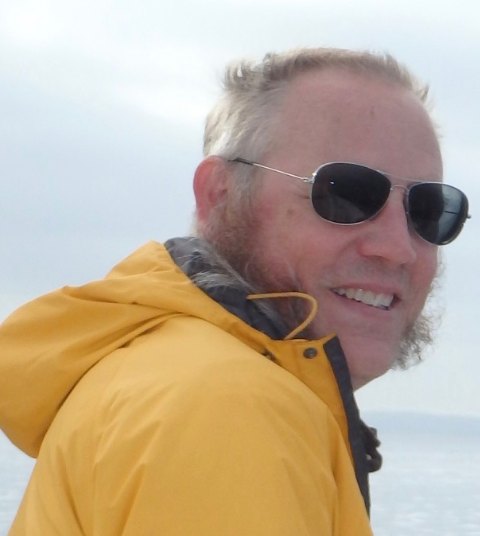
Matt Cook, Head of Unique Collections and Scholarly Communication at California State University Channel Islands, obtained his MLIS from the Catholic University of America and his MA in US History from George Mason University. He is a member of the American Library Association and California Academic and Research Libraries Association. He has worked at the Library of Congress, the United States Senate Historical Office, the Chicago Historical Society, the City of Chicago Public Schools, the Art Institute of Chicago and the Illinois Institute of Technology.
The Museum of Ventura County Library (MVC) houses over 150,000 resources pertaining to the history of Ventura County and it’s outlying regions. The collection spans the Chumash Indians, the Mission and Rancho periods, early settlement, commercialization, industrialization, to present times. MVC and the CI Library are partnering to both digitize their collection and survey unprocessed materials, known as arrears, and are jointly excited to offer positions for students to engage and assist with this important work. Meeting at the MVC, we will: initiate a digitization project to promote access to their important analog collections; update the current reading room and reader services; lead a large arrears problem currently housed in off-site storage; professionalize the Licensing business, and; develop a collection development program that suits the Library and MVC's current operating plan. It is expected that through the course of their work, students will identify discreet research topics of their own choosing and develop an on-line "exhibit" to illustrate or share their findings.
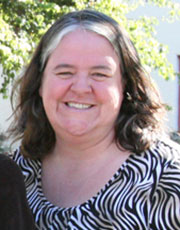
Dr. Marie Francois does research on the history of everyday life in Mexico City. Currently, she is focused on laundry in the eighteenth and nineteenth centuries. Her publications include A Culture of Everyday Credit: Housekeeping, Pawnbroking, and Governance in Mexico City, 1750-1920 (University of Nebraska Press, 2006); "Cloth and Silver: Pawning and Material Life in Mexico City at the Turn of the Nineteenth Century," The Americas (2004); “Housekeeping, Development, and Culture in Porfirian Chihuahua and Sonora,” Mexican Studies/Estudios Mexicanos (2011); “Products of Consumption: Housework in Latin American Political Economies and Cultures,” History Compass (2008); and “Stitching Identities: Clothing Production and Consumption in Mexico City,” in Pertierra and Sinclair, eds. Consumer Culture in Latin America (Palgrave Macmillan, 2013). She has published articles in Mexico in Estudios de Historia Novohispana (1999) and the Historia de la vida cotidiana series published by El Colegio de México (2005).
I am writing a history of laundry and laundresses in Mexico City in the 18th and 19th century. The SURF project would entail mapping the economic and social relationships of laundresses and laundry work places to support this project. The idea is to use a program such as Omeka (which the library has) to develop a website something like this one for the legal history of Oaxaca or this one on the history of prohibition in New Orleans. Students will read monographs (including mine on pawning in the same time period, A Culture of Everyday Credit, published in 2006 by the University of Nebraska Press, and peer-reviewed articles to acquaint themselves with the history of Mexico City, and then drawing on location data from census manuscripts (1790, 1811, and 1848), addresses from city archive documents, and advertisements from period newspapers, build a physical picture of the laundry business. Using city grids from Planos de la Ciudad de Mexico published by the Instituto Nacional de Antropologia y Historia as base maps in the software, we will track changes in the geography of laundering and laundry relationships across time. The end product will be publishable maps for my book, an interactive website depicting and narrating the evolving laundry business, and a co-authored article or articles on themes developed by the students through the course of their research. Ability to read Spanish a plus.
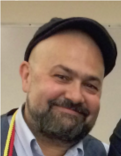
Dr. Javier F. González is a Certified Medical Interpreter through NBCMI, has worked on projects with InJoy Health Education focusing on prenatal, maternity and newborn care, teaches the core courses for CI’s Healthcare Interpreting Certificate and Spanish English Translation Certificate. He has vast experience as both an interpreter and translator in the healthcare field. As instructor for these courses, Javier has worked with many nursing students looking to impact delivery of healthcare to Spanish speaking communities in Ventura County and this project will help foster these efforts.
Dr. Kalena Lanuza is a Family Nurse Practitioner and faculty in the nursing program. She currently specializes in Women’s Health and her clinical and academic areas of interest surround care of women and children throughout Ventura County. Her doctoral project informed the development of the Maternal Mental Health Coalition of Ventura County’s, “Perinatal Provider PMAD Toolkit”, used by perinatal providers in Ventura County to treat and manage women with PMADs. She is the current co-chair of the Maternal Mental Health Coalition of Ventura County and Advisory Member for the Breastfeeding Coalition of Ventura County.
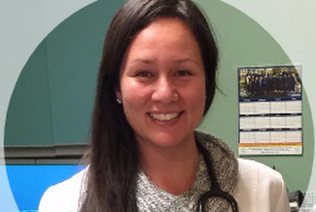
“A multi-disciplinary, community approach to decrease the stigma surrounding maternal mental health disorders in Ventura County.” Perinatal Mood and Anxiety Disorders (PMAD) can occur in up to 20% of women during the perinatal period and are among the leading cause of complications associated with childbearing (California Task Force on the Status of Maternal Mental Health Care, 2017). Furthermore, PMAD’s disproportionately affect women of color with approximately 38% of the population affected (Keefe, 2016). Untreated, PMAD can have far reaching negative effects on the mother, newborn child, family unit, and society at large. Effects can include increased miscarriages and premature births, impaired infant attachment, behavioral dysregulation in older children, and marital strain (Fairbrother, Young, Janssen, Antony, & Tucker, 2015). Depressed women have an approximately 90% higher healthcare expenditure than their unaffected counterparts and the annual overall economic burden to Ventura County for untreated PMAD related issues is estimated at over 55 million dollars per mother- baby pair (Dagher, Dowd, & Gjerdingen, 2012; Diaz & Chase, 2010; Ventura County Maternal Child and Adolescent Community Profile, 2018). Although effective treatment options such as social support, individualized psychotherapy and medications exist, women often feel stigmatized by a PMAD diagnosis and do not seek the help they need to heal. Decreasing the stigma associated with maternal mental health disorders can be one of the most tangible ways to decrease barriers to care and improve the health of Ventura County mothers and babies. To that end, the Maternal Mental Health Coalition of Ventura County (MMHCVC) aims to improve public awareness about PMADs, educate perinatal providers about evidence- based treatment options and offer women throughout the county resources to aid in recovery. This project will focus on partnering with MMHCVC to create a public awareness campaign aimed at decreasing the stigma associated with mental health disorders in pregnant and postpartum mothers across Ventura County. Specifically, both English and Spanish speaking mother’s will be the focus of the campaign with the goal of providing linguistically competent content for both populations. Students from the CSUCI BSN nursing program and Spanish program will work together to capture the lived experiences of women experiencing PMADs throughout Ventura County and will translate these experiences into video vignettes to be featured on the MMHCVC website and social media platforms.
Students will:
- Complete a literature review surrounding the prevalence and background of PMADs as well as barriers to receiving evidence- based treatment modalities.
- Work with Professor Kalena Lanuza to learn about real- world PMAD practice environments in Ventura County and available treatment resources.
- In collaboration with Professor Javier Gonzalez, Professor Kalena Lanuza and MMHCVC social workers, develop culturally sensitive and linguistically sound interview questions for women participating in the project.
- Under the direction of Professor Javier Gonzalez, ensure that narrative data is correctly transcribed into Spanish and English.
- Collaborate with MMHCVC media coordinator to produce captivating video vignettes with recorded interviews.
- Comply with privacy laws surrounding patient protection during development and production of videos.
- Present results to local community groups specializing in maternal- child health.
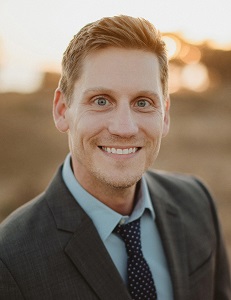
Dr. J. Jacob Jenkins is an Associate Professor of Organizational Communication at CI, Faculty Advisor for CI’s Communication Program, Campus Coordinator for CSU’s Affordable Learning Solutions, and OER Research Fellow for the Open Education Group. Jenkins received his B.A. in Architecture from Drury University and PhD in Communication from the University of South Florida. He has been teaching full-time since 2005, and has traveled extensively through 6 continents and 28 countries. During this time, Jenkins published over 40 peer-reviewed journal articles, book chapters, and reference works – six of which are coauthored with undergraduate students from CI. Jenkins’ work to foster community within racially/ethnically diverse organizations has received national honors from the Carl Couch Institute, Waterhouse Family Institute, CMM Institute for Social Evolution, and National Communication Association. Jenkins’ more recent work centers on the impact of open education resources (OERs) on student success, retention, and time-to-graduation rates. He is especially passionate about the use of innovative technology to reduce barriers and increase equity for historically underserved student populations.
Traditional studies of "resistance" have focused on abrupt and collective moments of social upheaval (e.g., strikes, sit-ins, and boycotts), as exemplified by the non-violent disobedience of Mohandas Gandhi and Martin Luther King, Jr. Yet in reality, such collective acts of resistance are few and far between (Guha, 2008). Furthermore, when these uncommon instances do occur, they typically and ultimately result in even more oppression by the ruling class, not less (see Scott, 1995). For each of these reasons, contemporary scholars have increasingly turned their foci to the study of "everyday resistance." Rather than collective moments of uprising, everyday resistance focuses on what individuals do between revolts to defend their shared/personal interests. Specific examples of everyday resistance include evasion, slander, sabotage, cynicism, pilfering, proverbs, folksongs, desertion, blackmail, storytelling, avoidance, absenteeism, dissimulation, foot-dragging, self-segregation, noncompliance, false compliance, feigned ignorance, feigned sexuality, and even “bitching,” to name but a few. Despite the recent increase of interest in everyday resistance, there are still relatively few scholars who have explored this phenomenon within diverse religious settings, prompting Few (2005) to call for research that addresses this present gap in literature: “There is a need within existing literature to also link religion, along with gender, race, and class, to... daily resistance strategies” (p. 633; see also Ganesh, Zoller, & Chency, 2005; Young, 2007). This proposed research study will contribute to the burgeoning field of resistance literature while simultaneously responding to Few’s aforementioned call for research that links the three interrelated issues of diversity, religion, and everyday resistance. It will offer one of the first empirical studies of everyday resistance within intercultural congregations by (a) identifying specific ways in which diverse members resist dominant organizational practices, (b) examining dialectical tensions that (re)emerge among diverse members and leaders, and (c) revealing the communicative practices used to negotiate these tensions. To this end, student researchers will be involved in every phase of the research process: contributing to its literature review, analyzing an existing data set of ethnographic field notes, collecting original interview data from 6-18 local faith leaders, analyzing their interview results via thematic coding, formulating practical and/or theoretical implications based on our findings, etc. The end result is expected to be a 25-page academic study suitable for competitive conference presentation and peer reviewed journal publication. Student researchers will earn full authorship on all resulting presentations and publications.
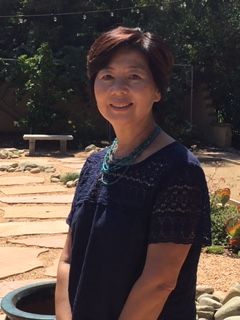
Dr. Sunghee Nam earned her Ph.D. in Sociology from University of Wisconsin-Madison. In her teaching, she promotes and practices an educational philosophy that is student-centered with an emphasis on experiential learning and civic engagement. She believes that student classroom learning should not be distant from real life. Thus, she is particularly excited about the educational model that is project-based and allows students to have hands-on experiences and apply what they learned in classrooms to real issues of the community. Her research interests involve first-generation college students and their critical cultural capital. Instead of a deficiency model of studying first-generation college students and their academic achievement, she utilized critical race theory and suggested that first-generation college students possess and utilize a critical cultural capital to navigate their college life. Her current research project involves international faculty in U.S. higher education. It investigates the ways in which international faculty adjust, operate, and navigate U.S. higher educational institutions.
This project focuses on the issue of homelessness in the City of Oxnard. The 2018 Point-In-Time Homeless Count reports, on any given day, over 400 individuals in Oxnard lived on the streets, in vehicles, in shelters, and transitional housing or other temporary situations. This number hugely underestimates the magnitude of the problem of homelessness in Oxnard. Homelessness is a tragic and complex social problem with multiple causes and consequences. The Housing and Urban Development estimates that it costs approximately $50,000 of tax dollars per year to support a homeless person. In order to deal with homelessness and assist the vulnerable homeless population make a successful transition into a more long-term sustainable living conditions, the City produced its five-year strategic plan this year. Professor Sunghee Nam will develop several projects based on the five-year homelessness strategic plan. The projects include (1) identifying unique needs of various homeless groups (such as homeless veterans, homeless families with children, homeless unaccompanied youth, chronically homeless individuals due to mental illness and chemical dependency, and homeless elderly); (2) identifying support and social services that are needed to meet the distinctive needs of each group; (3) identifying social and institutional barriers for each group to overcome homelessness; and (4) identifying stakeholders, advocacy groups, and resources critical to dealing with homelessness in Oxnard. This is an excellent opportunity for students who are interested in applying what they have learned in classrooms to solving a real social problem of homelessness in our community. Students will develop research skills by investigating a research question concerning homelessness. Students will work with community stakeholders to develop policy objectives and strategies to reduce homelessness, utilizing their research findings. Not only will they study the topic, students will have hands-on experiences by working with homeless individuals and finding suitable social services and support programs for them. These projects are interdisciplinary in nature, so that students from different majors will collaborate to work on the multifaceted social problem of homelessness. Student researchers will:
- Search and work with existing quantitative data and information related to homelessness. Students will analyze the existing data to answer specific research questions on homelessness.
- Conduct interviews with homeless individuals to understand their needs and challenges to overcome homelessness. Students will develop interview skills and research skills dealing with qualitative data.
- Conduct interviews with community leaders, stakeholders, and advocates to understand the unique factors and broader dynamics of Oxnard related to homelessness.
- Work on social media publicity on homelessness. Students will utilize their research experience and findings to create a public campaign on raising awareness by humanizing the social problem of homelessness.
- Present results to the local community to raise awareness on this topic and mobilize community resources and advocates to develop strategies to deal with homelessness in Oxnard.
- Write a research paper based on quantitative and qualitative data gathered for publication in an undergraduate research journal.
- Make a public presentation at an academic conference.
Math and Science
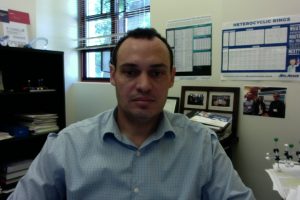
Dr. Ahmed Awad is Assistant Professor of Chemistry at CSUCI. Previous positions include Postdoctoral Research Associate at UC Santa Barbara and at Iowa State University. Dr. Awad earned his Ph.D. in Bioorganic Chemistry from Ulm University in Germany. His research interest is in the area of therapeutic nucleic acids such as antisense oligonucleotides for treatment of cancer and nucleoside analogues that can target bacterial and viral infections. Selected Publications: * Undergraduate students’ names are marked with an asterisk: Lynn M. Utley*, Jessica Maldonado*, and Ahmed M. Awad, Nucleosides, Nucleotides and Nucleic Acids, 37, 20-34 (2018); Robert Van Ostrand*, Casey Jacobsen*, Alicia Delahunty*, Carley Stringer*, Ryan Noorbehesht*, Haidi Ahmed*, and Ahmed M. Awad, Nucleosides, Nucleotides and Nucleic Acids, 36,181-197 (2017); Theodore V. Peterson*, Tobin U. B. Streamland*, and Ahmed M. Awad, Molecules, 19, 2434-2444 (2014); Eric R. Samuels*, Joshua McNary*, Maribel Aguilar*, and Ahmed M. Awad, Nucleosides, Nucleotides and Nucleic Acids, 32, 109-123 (2013); Ahmed M. Awad, Michael J. Collazo*, Kathrinna Carpio*, Christina Flores*, and Thomas C. Bruice, Tetrahedron Letters, 53, 3792-3794 (2012).
Synthesis and biological evaluation of novel nucleoside analogues as potent antibacterial and anticancer agents: Increasing bacterial resistance to antibiotic therapeutics continues as a pervasive public health concern in global medicine. while various therapeutic modalities are currently under study, exponential bacterial growth and resistance continue at a concerning rate. Increasing globalization in combination with widespread prescription of antibiotics, early termination/incomplete course of treatment, and usage in animal husbandry partially explain recent and unprecedented resistance. One way to address the concern is to develop novel drugs that are active against these resistant microbes. Research scientists have been preparing and testing many new chemical compounds before identifying substances with potential and favorable results. Those substances were subject to more detailed evaluations to discover compounds that kill microbes or cancer cells. Nucleosides are the building blocks of nucleic acids, DNA and RNA. Nucleoside analogues are chemically modified nucleosides that have shown promising results as antimicrobial agents and as components of potential anticancer drugs. In this project, students will investigate and develop novel nucleoside analogues that can be screened as effective agents to treat microbial infections or cancer. Students will work on coupling the nucleoside with sulfonamide moieties to synthesize novel sulfonamide-nucleosides hybrid analogues. Sulfonamides are an important class of compounds that have been reported as antibacterial, anticancer, and antiviral drugs, and at least two clinically used HIV inhibitors possess sulfonamides in their molecules. Thus, herein, we propose a combinatory structure that may serve as a potentially valuable model to combat antibiotic resistant bacteria. The synthesized molecules will be purified and their structures will be confirmed by spectroscopic techniques. These compounds will be evaluated as antimicrobials against Gram-positive and Gram-negative bacteria and may be submitted to the National Cancer Institute for screening in their cancer cell line assay system. The participating SURFers will work in either one or two research groups to develop an effective and convenient methods to synthesize the target molecules. The faculty member will introduce the synthetic methods, and will propose alternative solutions for possible problems. Students will perform literature survey, collect reported protocols, and with the guidance’s of the faculty research mentor will develop their synthetic schemes. Students proposals will be discussed before an efficient synthetic route are recommended. After intensive training provided by the faculty, students and the faculty will work on their synthetic protocols, purify their products by column chromatography, characterize their new compounds using NMR and Mass spec techniques, perform the antimicrobial tests, and analyze their data for the final conclusion. Students will expect to be excited to complete their work and submit it for presentation or/and publication. They should commit to the eight-week faculty-mentored student research collaborative during the summer 2019 and also excited to work during the fall semester 2019 to complete the project. The faculty will be present to mentor and train students, and will make himself available at any time to provide them with guidance and advice. There will be a daily group meeting to discuss the progress of the project. Students will be recognized and acknowledged for their efforts. Those who produced outstanding research will be able to present their work at scientific conferences (including SCCUR, CI SAGE, CSUPERB, and ACS) and will be encouraged to submit their work for publication. In addition, outstanding students will be nominated for research awards and scholarships.
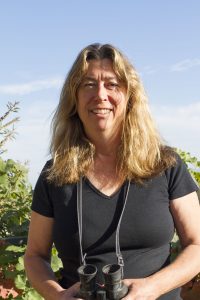
Dr. Cynthia Hartley is a lecturer in the ESRM department where she teach GIS and mentor Ormond Beach Service Learning students. She has worked on shorebird recovery at Ormond Beach for over 16 years. Her two professional passions are endangered shorebirds and GIS mapping, which she combines in her work developing models using GIS tools to predict how beach nesting shorebirds select nest sites. This will help us to better understand their habitat needs and assists future protection work in the face of climate change. She looks forward to a summer mentoring undergraduates and training the next generation of conservation biologists.
Research Description: Two species of shorebirds listed under the Endangered Species Act (ESA) nest on Ormond Beach, the western snowy plover (WSP) and the California least tern (CLT). Students selected to join this SURF team will be a part of our Shorebird Recovery Program which integrates CLT and WSP recovery work with student conservation research and hands on learning. Students will help us achieve these program goals; 1) fulfill US Fish and Wildlife Service (USFWS) requirements for annual CLT and WSP nest monitoring surveys, 2) develop new technology to innovate monitoring methods, 3) create Geographic Information System (GIS) models that predict nest site selection, and 4) assist in protecting sensitive habitat. In 2018 the USFWS granted us permission to develop the use of unmanned aerial vehicles (UAV) as an innovation to endangered species monitoring and habitat study. We are only the second group in the US granted permission to fly UAVs over nesting WSP. In 2019 we will return to continue this work with WSP, and expand our project to include nesting CLT. Student Research Opportunities: Students will work together as an integrated team and on individual projects to accomplish program goals and conduct independent research. The Shorebird Recovery Program has many diverse tasks that need to be accomplished, therefore we have opportunities for students to be mentored in one or more focus areas: Nest Monitoring- Under the supervision of a permitted field biologist, students with an interest in avian conservation and biology will learn ESA regulations, identification of WSP and CLT by age and gender, tracking methods for locating nests and determining hatch/fail outcome, how to minimize disturbance when approaching nests, use of ArcGIS Collector, recovery metric calculations and data documentation for reporting to USFWS. UAV Operator/Tech- A student with an FAA part 107 certification will have an opportunity to use Pix4D to pilot UAV flights over nesting areas, create composite orthomosaic imagery and digital elevation models (DEM), use Real-Time Kinematic (RTK) Global Positioning System (GPS) to take accurate ground way-points. There will also be an opportunity to develop new nest monitoring and bird censusing methods using infrared and true color imagery collected by UAV's. GIS- Student(s) with an interest/aptitude in GIS will help the team with weekly map updates, ArcGIS Collector and work on developing nest site selection models using DEMs we create from UAV collected imagery. If time allows, construct a story map highlighting our summer SURF project. Video- A subset of nests are monitored with trail cameras, and nests are recorded with GoPro video during UAV flights. This is an opportunity to gain experience with field camera methods, including camera set up and placement, video data management and archive. GoPro video must be scored and charted to document bird reactions to UAV flyovers. Students interested in video editing have an opportunity to create video shorts. All students will be required to: 1. Partake in field work up to 4 days/week, and daily lab time to process field data and review literature 2. Work together as a team during UAV flights and nest monitoring field work 3. Present work updates each week to our project team 4. Create an individual scientific poster describing research goals and outcomes for the summer 5. Participate in and contribute to the Summer Interdisciplinary Research Learning Community.
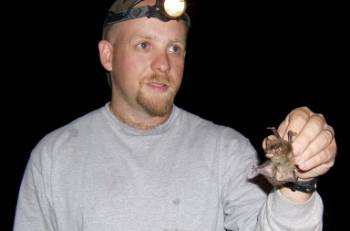
Jason Miller is a Ph.D. mathematician who has been mentoring students in interdisciplinary mathematical biology projects for almost 20 years. While on the faculty at Truman State University, he secured over $1.5m in NSF funding to establish an interdisciplinary research-focused learning community for mathematics and biology students. He mentored projects in modeling cancer biology, computer vision and plant identification, and quantitative identification of bats. Having just joined the mathematics faculty at CI after a stint serving the administrative Dark Side, he is eager to use his experience with bats to give CI students a unique and exciting research experience that integrates the mathematical and scientific ways of understanding the world around us.
I am interested in understanding how we can identify the species of a free-flying bat using recordings of their search-phase echolocation calls. Using acoustic data is becoming more acceptable as a voucher for the presence of a species of bat, but only in cases where the calls of one species are easily distinguished from the calls of others in the area. Bat researchers are comfortable using descriptive statistics to describe bats to species, and some use more sophisticated clustering methods (e.g., discriminant functions, classification trees). I want to apply these techniques to the species on Santa Rosa Island, and I want to explore the use of some more sophisticated approaches such as deep learning so more species can be identified reliably without human intervention. In reviewing documents and papers about Santa Rosa Island (e.g., the Channel Islands National Park Final General Management Plan Wilderness Study Environmental Impact Statement, “Distribution of the Bats of the California the Channel Islands”) and in communicating with other experts in the field, it appears that not much is known about bat species on Santa Rosa Island, especially since the feral pigs and eagles have been removed. Having some previous experience working with biologists on bat surveys in Missouri, I understand how to work with students to collect acoustic data on free flying bats in the wilderness. For the SURF program, I would like to work with a small team of students that include mathematics and biology majors to start designing and conducting a survey of bats on Santa Rosa Island. Students will be involved in every aspect of the project: collecting data, recommending site selection, reviewing data, and creating models for species identification. A preliminary survey done on the island in November 2017 suggests that bats are abundant on the island, but that conditions for collecting data are harsh. Our work will require a Scientific Research and Collecting Permit from the National Park Service, and it may also require a collection permit from the U.S. Park and Wildlife Service. (I intend to submit applications for these in November 2018.) We will also consult with field biologist include Dr. Allison Alvarado (Biology) and the noted bat researchers Pat Brown (UCLA) and Bill Rainey (Berkeley). There is also the chance we could consult with Kim Livengood and Chris Corben, two specialists in the technology we will use. Our work will involve collecting recordings of the ultrasonic search-phase calls of free flying bats on the island, organizing those recordings, and then studying them using mathematical methods. Finding and recording the bats requires an understanding of the natural history of the bat species that we expect to encounter, identification of the likely foraging locations of those bats (which requires an understanding of the island fauna, insect populations, and microclimates). Our work will be intellectually and physically rigorous. Obtaining recordings will require us to spend a significant amount of time on Santa Rosa Island, scouting corners of the island that are distant from the bunkhouse and working from an overnight basecamp. We will work with recording instruments from Titley Electronics, consulting with the bat ecologists at their U.S. office in Columbia, Missouri. We will use the Anabat Walkabout to scout locations for month-long passive surveys, and we will use the Anabat Swift for month-location collections of data. Data will be reviewed and cleaned on Anabat Insight software before being saved and analyzed. The data we collect will be shared with national and international program that are monitoring bat populations, such as the North American Bat Monitoring Program (NABat). Data will also be made available online for public use.
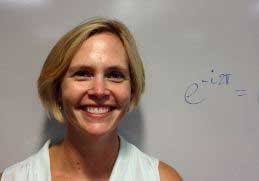
Dr. Christina Soderlund began teaching at CSUCI in 2013. Before coming to CI, she worked as an Assistant Professor of Mathematics at California Lutheran University in Thousand Oaks. She earned her Ph.D. in 2004 from UCLA, where she studied Topological Fixed Point Theory. As Dr. Soderlund began her career, she was named a Fellow of Project NExT (New Experiences in Teaching), a national professional development program for new mathematics faculty. She has overseen numerous undergraduate research projects on topics such as the Poincare Conjecture, Meta Problems in Mathematics, and Hyperbolic Wallpaper Groups (to name a few). While at CSUCI, her interest in descriptive statistics has grown through her teaching of CI’s Biostatistics course. The potential for student research in descriptive statistics is particularly attractive as it draws students from all levels of mathematics. Her publications include papers from her own research, as well as co-authorships with colleagues and students. She has presented her work at local, national and international conferences, and her students have presented at conferences across southern California. In 2018, she became a fellow in the Project PROMESAS STEM Service Courses Initiative, a multi-year faculty development program designed to transform students’ experiences in mathematics courses that serve all STEM majors.
CSUCI has long embraced the ideal of access to education while seeking to provide high-quality degrees for its students. Towards this end, many people have worked to garner resources to build and sustain the implementation of high-impact practices such as student research, peer mentoring, and civic engagement. Among these efforts, the success in obtaining HSI grants has been particularly helpful in providing resources (over $26m to date) for such programs. As CSUCI has matured, its ability to capture data that is potentially useful in addressing questions regarding the effectiveness of various practices designed to support its students has improved. In particular, the ability to examine effects on and outcomes for subpopulations of students has improved. Meanwhile, the CSU Graduation Initiative 2025 has added focus on increasing graduation rates while closing “achievement gaps” between subpopulations of students; CSUCI is determined to do this while maintaining or increasing the quality of the graduates’ degrees. We propose a student research project in which students will learn and apply data analysis tools to examine the effectiveness of educational interventions. Currently, this sort of study is most likely to be undertaken for students in programs like SURF. Similarly, institutional efforts to engage faculty with data tend to yield a focus on the students majoring in the faculty’s fields. We propose examining the effectiveness of particular courses taken specifically by non-majors. With approximately half of students’ units taken outside the major, developing a means to examine the impact of general education courses on non-majors could provide currently missing insights. The Chicana/o Studies (CHS) program offers a wide range of educational interventions both for Chicana/o students and for those from other backgrounds. The courses and programs supported by CHS serve many students beyond those majoring in CHS. In our research, we will apply statistical analyses to determine whether students who take a CHS course and/or participate in CHS programs are more likely to be retained the next semester. We will also examine graduation rates for these students and determine how they compare to the graduation rates of other students of similar demographics. This project will use the enormous storehouse of CI data to explore the effectiveness of particular educational interventions on Chicana/o student retention. While this project is highly mathematical, its very nature will require interdisciplinary discussions with people across the university, including Jose Alamillo (current coordinator for CHS), institutional researchers, and those with experience using data to address educational interventions (e.g., Delil Martinez, Cindy Wyels). In addition to enjoying the implicit benefits of a research experience, the participating SURFers will acquire data analysis tools, perspectives on interdisciplinary approaches to research, and the satisfaction of helping the university understand how it can better serve its population of Chicana/o students. SURFers will work as a team (ideally 2-4 students), applying descriptive statistics such as correlation analysis, regression analysis, generalized linear models, t-tests and chi-square tests. While we expect to focus on quantitative data acquired through a Spring 2019 IRB proposal and institutional data request, we will remain open to other statistical analyses as the project is under way. This project is appropriate for students who have successfully completed courses in differential calculus and probability and statistics. Some Excel/R experience would be ideal, though not required
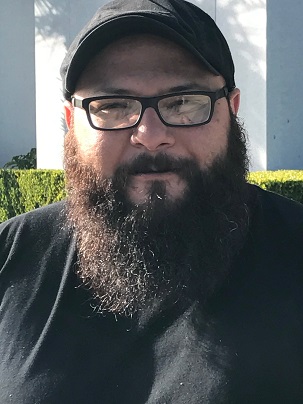
Dr. Hugo Tapia is an Assistant Professor of Biology at CSUCI. Dr. Tapia’s research interests are focused on better understanding the molecular mechanisms behind extreme stresses. Using the yeast Saccharomyces cerevisiae as his model organism, Dr. Tapia completed his Ph.D. in Microbiology and Molecular Genetics from the University of Texas Medical School in Houston. During his Ph.D., Dr. Tapia described the function of a molecular chaperone and its importance in yeast cellular development. Dr. Tapia then moved west to the University of California - Berkeley to complete his postdoctoral training. At Cal, Dr. Tapia worked on understanding the mechanisms that allow certain organisms to survive without water; detailing the role of two specific stress effectors against this deleterious stress. He will continue investigating this extreme stress at CI using a variety of molecular biology and biochemical techniques.
Climate change has accentuated the importance of understanding how organisms respond to stresses imposed by changes to their environment, like water availability. Unusual organisms, called anhydrobiotes, can survive loss of almost all intracellular water. Anhydrobiotes provide us with an unusual window to study the stresses and responses imposed by severe water loss. My lab focuses on trying to identify the myriad of stresses that could be induced by water loss, as well as the stress effectors that have evolved to counteract such a deleterious stress. High levels of trehalose (a simple disaccharide) and hydrophilins (small-intrinsically disordered proteins) are found in nearly all anhydrobiotes, and in vitro studies suggest they could mitigate desiccation-induced damage to proteins and membranes. Previous to arriving at Channel Islands, I worked on studying this rare phenomenon in a model organism, the yeast Saccharomyces cerevisiae. Working with yeast cells allows for easy use and manipulation of an organism that has been well established in molecular biology research over the past 60 years, with over 50,000 published scientific articles describing yeast research. It is an excellent organism to train undergraduate students new to the field of molecular biology for a variety of reasons, including, its quick replication and its ease to manipulate genetically. The doubling time for yeast is about 90 minutes at 30° C. In contrast, human cells growing in culture need about 24 hours to double. There are also well-defined genetic methods for yeast that allow researchers to easily isolate mutants, cross them with other mutants or into other genetic backgrounds, and map the locations of genes. Harnessing the awesome power of yeast molecular biology, I was able to demonstrate in vivo for the first time that trehalose and a yeast hydrophilin, Hsp12, are able to confer complete desiccation tolerance to otherwise sensitive cells. Work in my lab will focus on further identifying the molecular mode of action by which desiccation tolerant organisms fight against an otherwise lethal stress like desiccation. I have several projects planned in which undergraduates can work on separately and as a team during their summer research program. Students will use various aspects of molecular biology, including, genetics, cell biology, and biochemistry as needed to address our different hypotheses. Project 1: We will identify the molecular targets protected by trehalose and Hsp12 during sever water loss. This project will focus on identifying protein-protein/protein-sugar interactions between Hsp12/trehalose and ‘client-proteins’ requiring stabilization mediated by our two effectors during severe water loss. We will also assay for the possibility of membrane stabilization/dynamics on different model membranes by our two effectors. Project 2: We will be using a set of commercially available yeast strains to examine and identify novel stress effectors used to counteract severe water loss. I have acquired 16 different commercially available baking and brewing yeast strains. We will assay desiccation and general stress tolerance of these strains, and using the power of yeast genetics, tease out and identify possible stress effectors used by different strains to combat the lethal stress of desiccation. Project 3: During my postdoc, I generated a set of transgenic plant strains (Arabidopsis thaliana) expressing different hydrophilins (yeast-Hsp12, as well as three hydrophilins from the tardigrade Hypsibius exemplaris). We will grow plants up from their current seed form, genotype the adult plants to confirm expression of the novel hydrophilins and finally phenotype the plants to test for desiccation traits provided by the foreign hydrophilins using a variety of leaf wilting and plant desiccation assays.
Applied Higher Education Projects
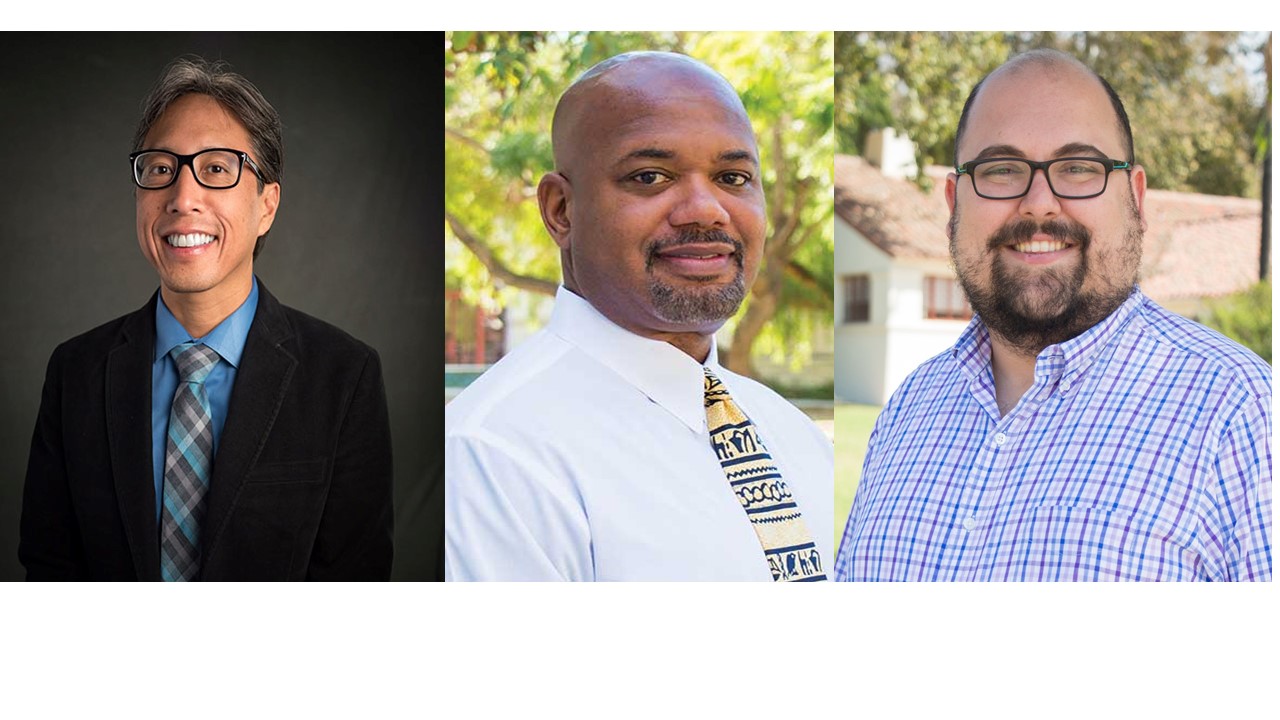
Richard Yao, Ph.D., Vice President for Student Affairs
Charles Osiris, Ph.D., Associate Vice President for Retention, Outreach and Inclusive Student Services
Hiram Ramirez, Ph.D., Director of Inclusive Student Services and Multicultural Dream Center
Support for Peer Support: Examining Stress Among Campus Peer Leaders. Higher education research has demonstrated the significant impact of peer interactions on a number of domains, including successfully navigating the transition into college, student satisfaction, learning and academic performance, and persistence and retention (Shook & Keup, 2012). As such, formal peer leadership programs have been extremely popular on college and university campuses, and it is estimated that approximately 78% utilize some type of peer education/leadership programming (Sawyer, Pinciaro, & Bedwell, 1997). Peer leadership programs originated in residential life and orientation programs, but have expanded to include areas such as judicial affairs, student activities, placement centers, religious centers, counseling centers, advising programs, and crisis intervention programs (Ender & Kay, 2010). More recently, peer leadership in academic support programs has become more popular, which includes peer tutoring, supplemental instruction, co-instructors in first-year seminars, and academic coaching (Ender & Kay, 2001; Latino & Unite, 2012).
The benefits for students who are served by peer leaders have been widely documented, which include positive effects on academic achievement, student retention, liking the subject matter, increased engagement, and improved access to supports through referrals from peer leaders (Cooper, 1997; Sharkin, Plageman & Mangold, 2003). In addition, numerous benefits for the peer leaders themselves have been documented, and there is a mutual benefit for students who serve in these leadership roles (Shook & Keup, 2012). Research has demonstrated that peer leaders are overwhelmingly pleased with their involvement and role (Keup, 2010). In addition, peer leaders have shown an increased knowledge of campus resources, experience more meaningful interactions with faculty and staff, and perceived changes in interpersonal communication, organization, time management, presentation skills, written communication skills, critical thinking, problem solving abilities, and group processing skills (Keup, 2010; Ender & Newton, 2010). Other benefits include academic skill development, understanding academic concepts, and an increased appreciation for education and their institution (Skipper & Keup, 2017).
While the large majority of attention has focused on the benefits of peer leadership programs for students, peer leaders, and their institutions, there has been limited attention and research examining the potential risks for peer leaders. In addition, while the benefits of peer leadership positions have been widely demonstrated, it cannot be assumed that peer leadership programs are free of complications and challenges. The popularity of peer leadership programs has grown, in part, due to the ability of colleges and universities being able to administer broad initiatives and interventions without having to hire full-time professional staff (Shook & Keup, 2012). As such, peer leaders are often asked to fulfill job responsibilities that would be expected of full-time professional staff (Shook & Keup 2012). Research has also helped identify potential risks for peer leaders, which include over-involvement resulting in adverse affects on grades, too much time devoted to peer leadership responsibilities, and stress associated with the peer leadership role (Keup, 2010). In addition, questions of role clarification and self-presentation, perfectionistic tendencies, unrealistic workloads and a lack of guidance on how to manage the roles of peer leader and student have been identified as potential risks for peer leaders (Colvin, 2007; Colvin & Ashman 2010; Skipper & Keup, 2017).
Anecdotal evidence has suggested that some peer leaders have experienced significant levels of stress related to their workload and role expectations to the point of some level of impairment in functioning. As such, the purpose of this research is to more fully examine the stress levels of peer leaders specifically working in academic support programs and comparing them to the general student population. Student researchers will be involved in the following aspects of the research process: contributing to the literature review, analysis of an existing data set examining stress levels in academic support peer leaders and comparison group, and discussion on the practical implications of the research findings to improve peer support training related to self-care and support.
